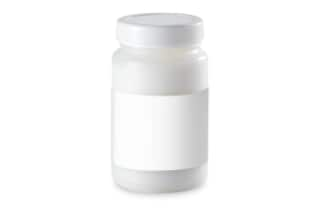
|
Separation Mode |
GPC/GFC/SEC |
|
Detection Method |
RI/ELSD, UV |
|
Formulation |
Solid |
|
Storage Condition |
4C (Fridge) |
|
System Type |
LC |
|
Shelf Life |
36 Months |
|
Shelf life upon reconstitution |
1 Week |
|
Shipping Condition |
Ambient |
|
Tolarence |
10% (Mp) |
|
Mass |
0.5 g |
|
Type |
Calibration |
|
UNSPSC |
41116107 |
|
Product Type |
Standard Kits |
|
Units per Package |
10 pk |
Polymethylmethacrylate Mid MW Standards Kit
The Polymethylmethacrylate Mid MW Standards Kit includes 10 GPC standards (Gel Permeation Chromatography standards) in a special collection for determining non-aqueous molecular weight. Mid-Molecular Weight Kit for Polymethylmethacrylate. The following molecular weight standards are contained in each of the ten vials, each weighing 0.5 grams: 2400, 9500, 31000, 52000, 100000, 170000, 270000, 490000, 730000, and 1000000.
Polymer-specific calibration standards offer quick and accurate references to recognized molecular-weight ranges and are designed specifically for various types of polymer analysis. The table shows the MW ranges and polymer types. For calibration, Waters provides a variety of well-characterized polymer standards. The selection consists of both kits and distinct standards. Both aqueous and non-aqueous applications can use the Standards.
The storage life of the Polymethylmethacrylate Mid MW Standards Kit is 36 months, with a further one week after reconstitution. When used for organic GPC with a variety of medium polarity eluents such tetrahydrofuran, toluene, methyl ethyl ketone, and ethyl acetate, polymethylmethacrylate (PMMA) standards are incredibly flexible. Additionally, they perform well with more polar chemical eluents, including hexafluoropropanol, dimethylformamide, and dimethylacetamide. The MWs are chosen to give equidistant calibration sites that range from 500 to 15 million g/mol for higher precision.
In addition to connecting with a member of our global support staff who can help you with any inquiries or worries you might have, you will be able to shop for lab equipment in accordance with your laboratory needs.
You may also be interested in checking out AutoPurification System Standard. A distinctive set of standards and mixes makes up the Quality Control Reference Material portfolio. Before analyzing crucial material, these items enable the user to assess and benchmark their chromatography equipment. All of the goods in the portfolio were particularly created using the scientist's knowledge at Waters. Three substances—Thionin, Thioflavin, and Crystal Violet—are included in the AutoPurification Dye Standard. Through fraction collection, this standard mix is utilized to verify the benchmark performance of a preparation/purification system. This specific QCRM was created with the user's ability to confirm proper fraction collection in mind.
What Methods Are Recommended For Isolating And Getting Ready Analyses?
Two popular SPE methods are employed to separate and prepare sample components of interest. When the concentrations of the target compounds are too low for accurate quantification, the retention-cleanup-elution technique is commonly applied. This approach leads to the concentration of diluted samples and trace enrichment of compounds. A pass-through cleanup technique may be utilized if the desired sample component is present in large quantities. However, there is no sample enrichment when a pass-through cleanup method is used.